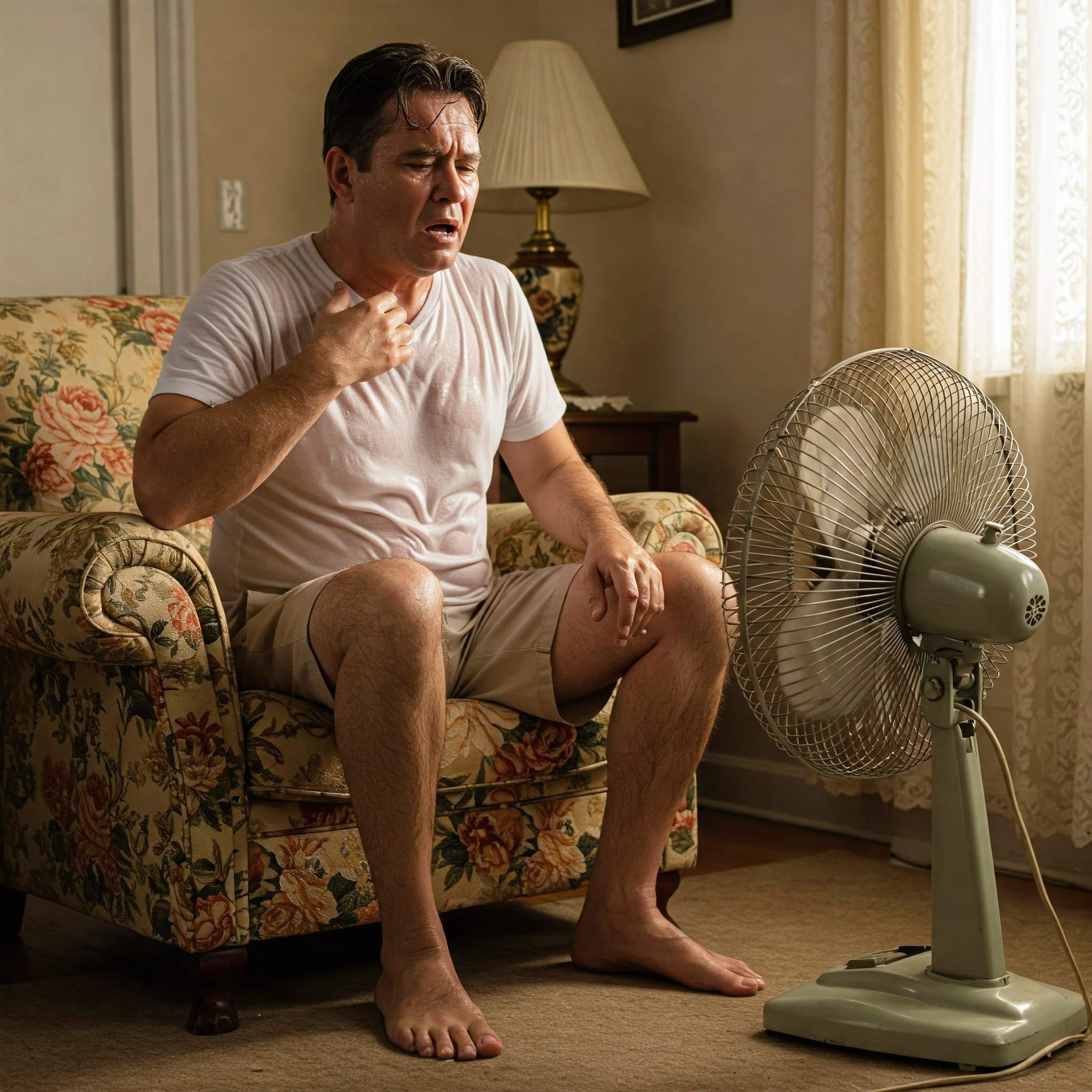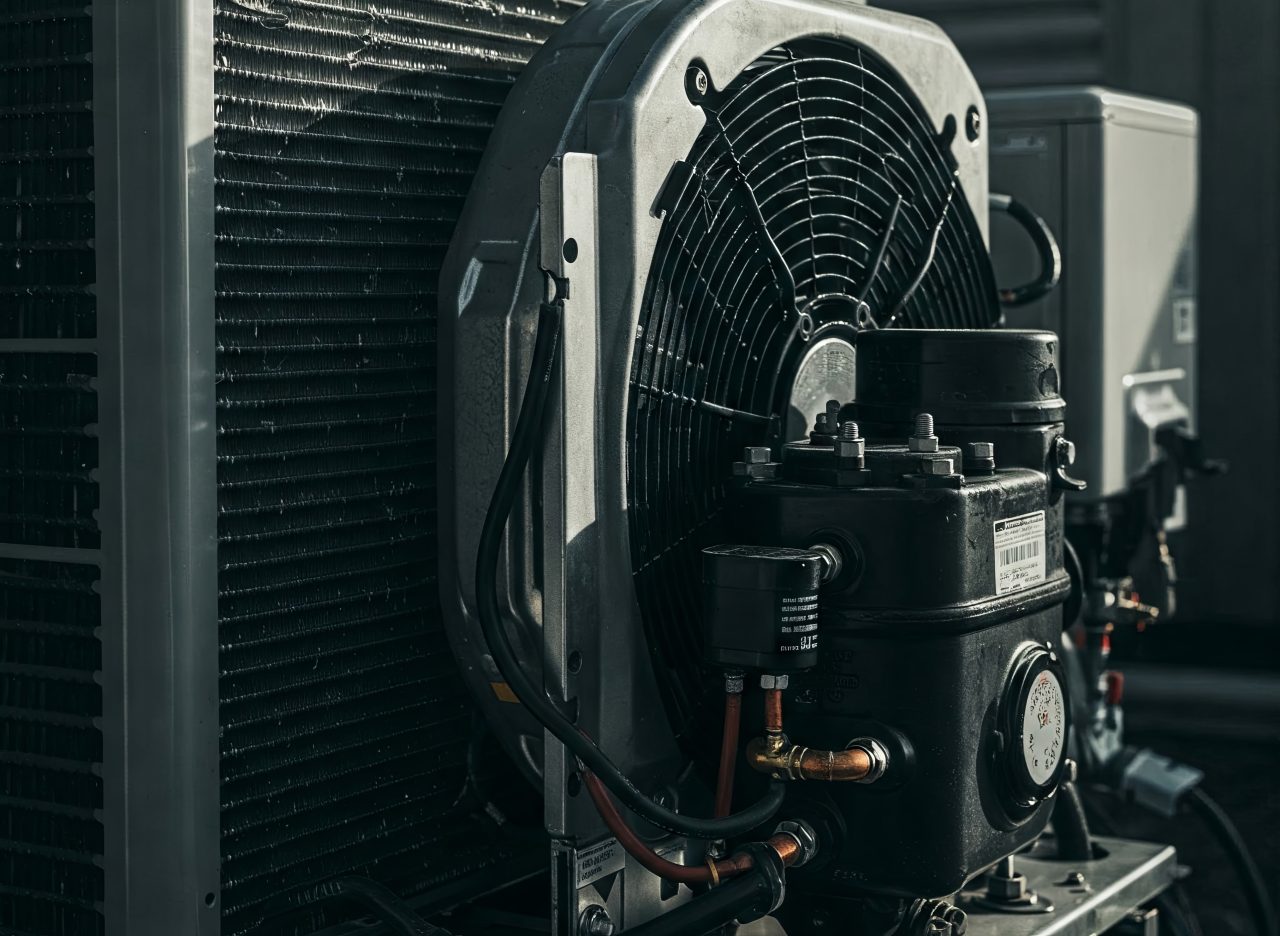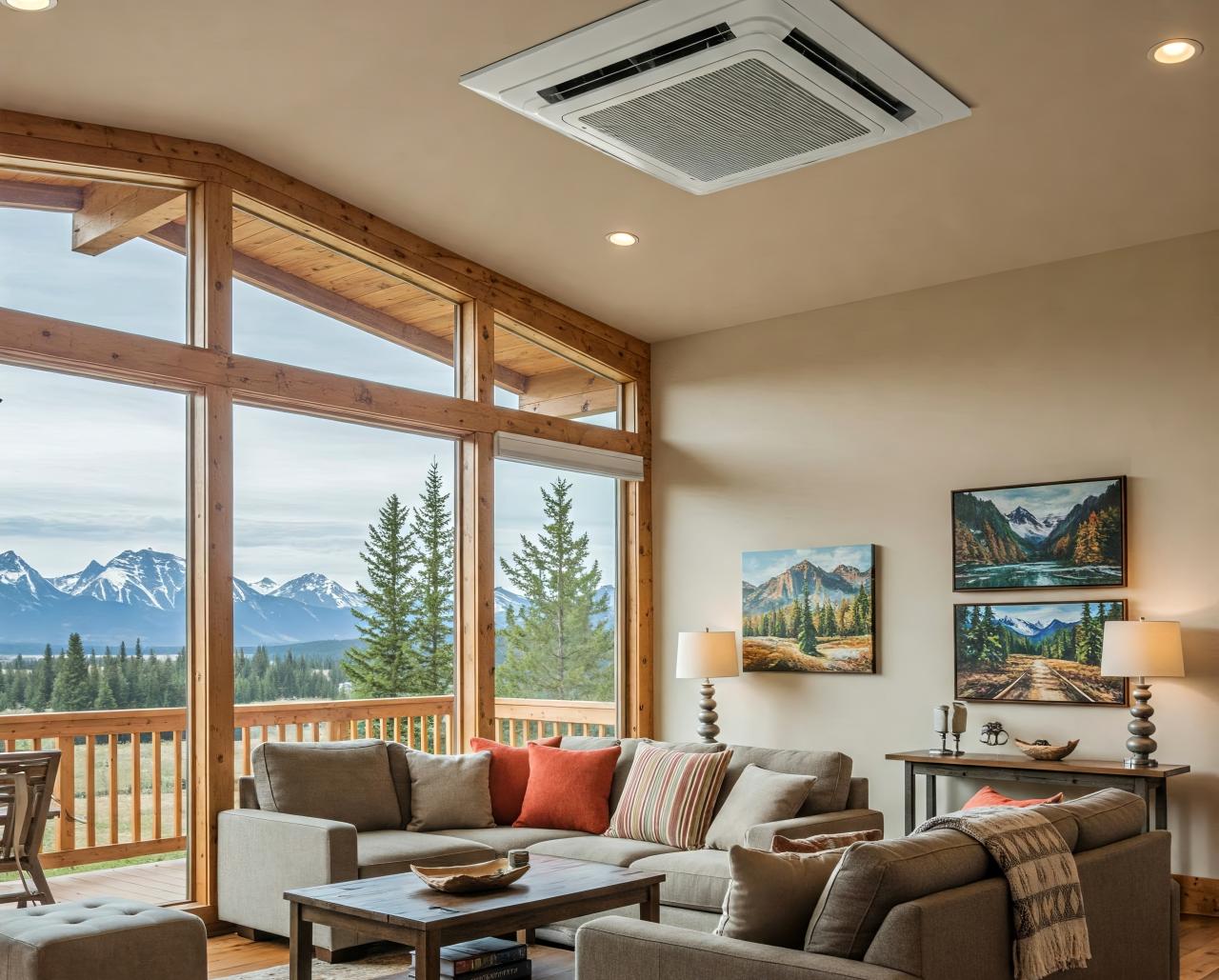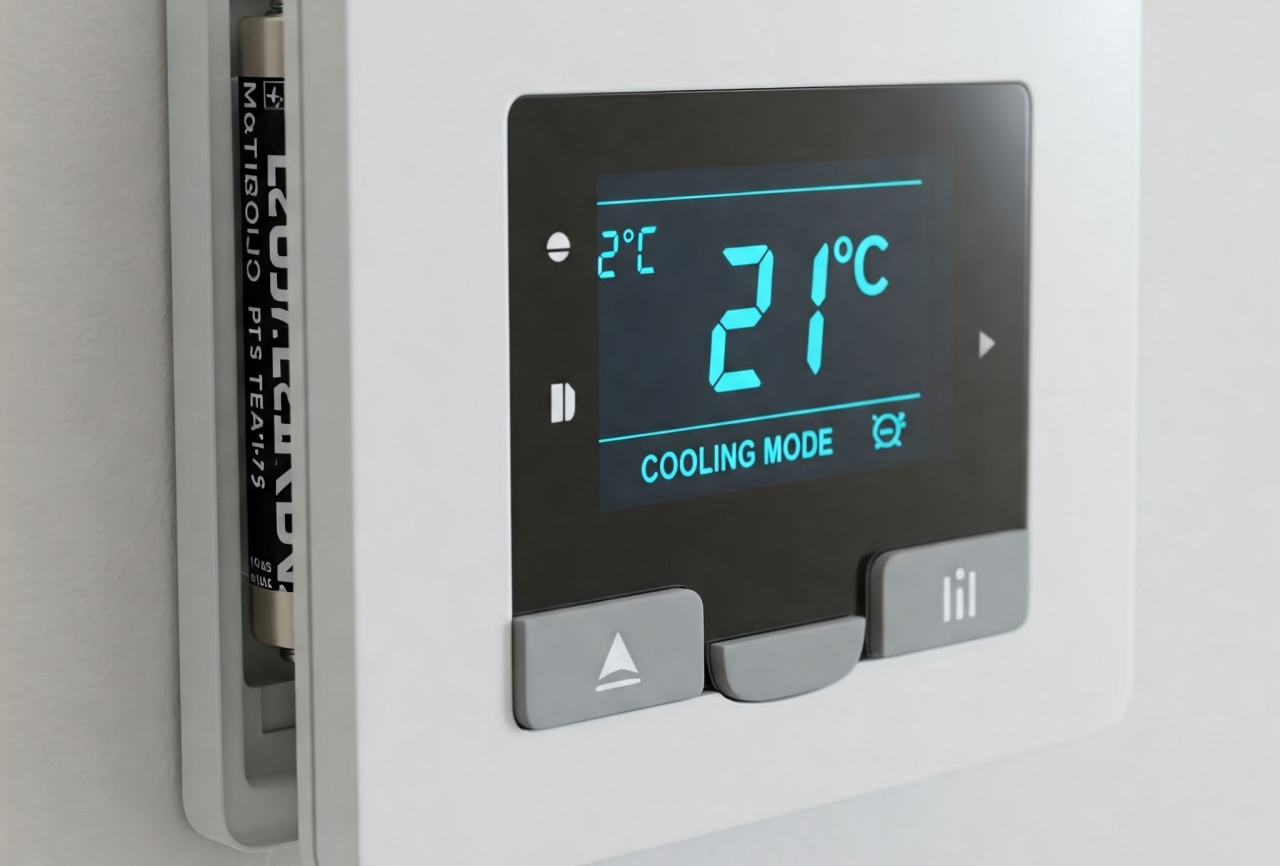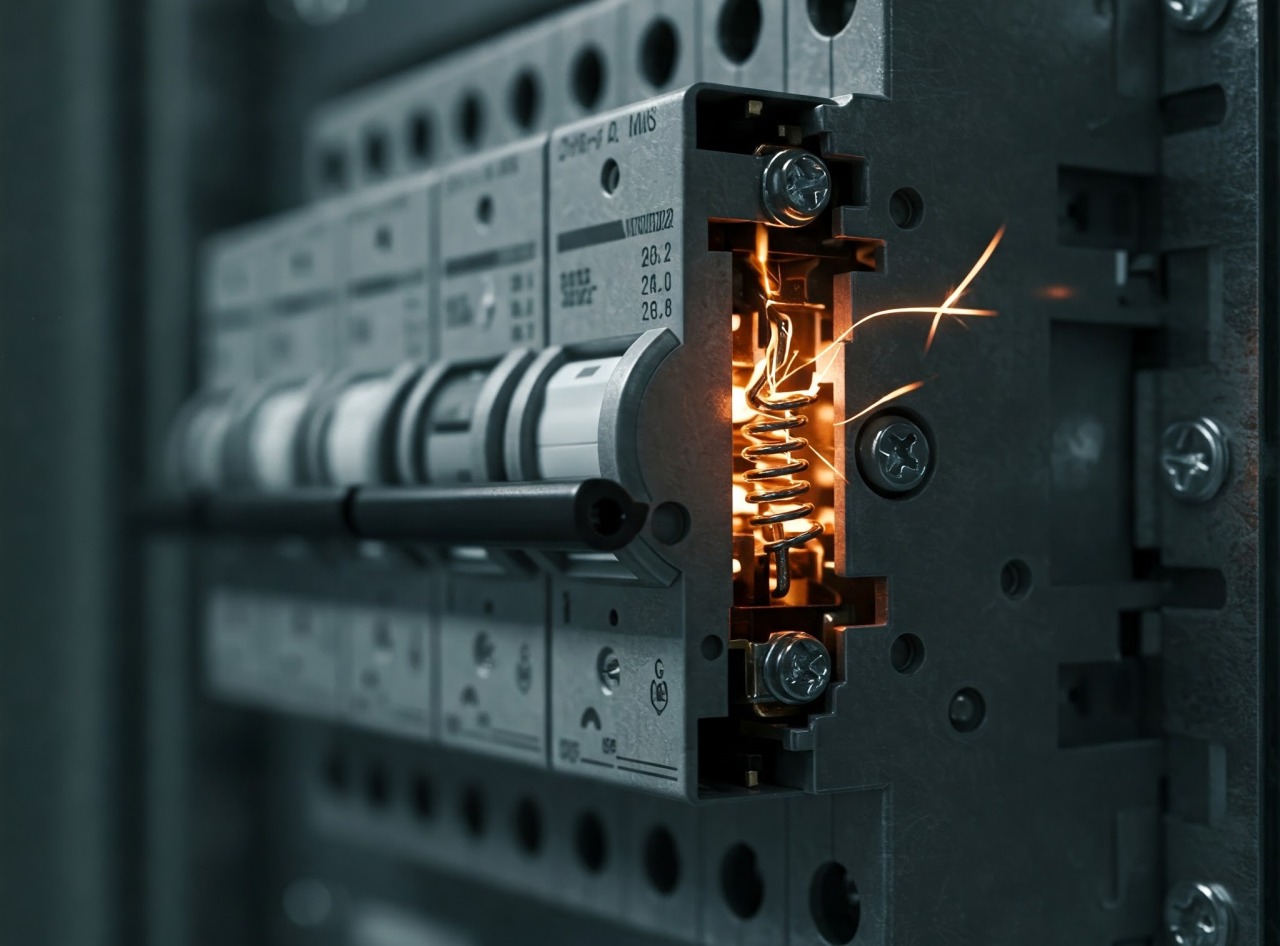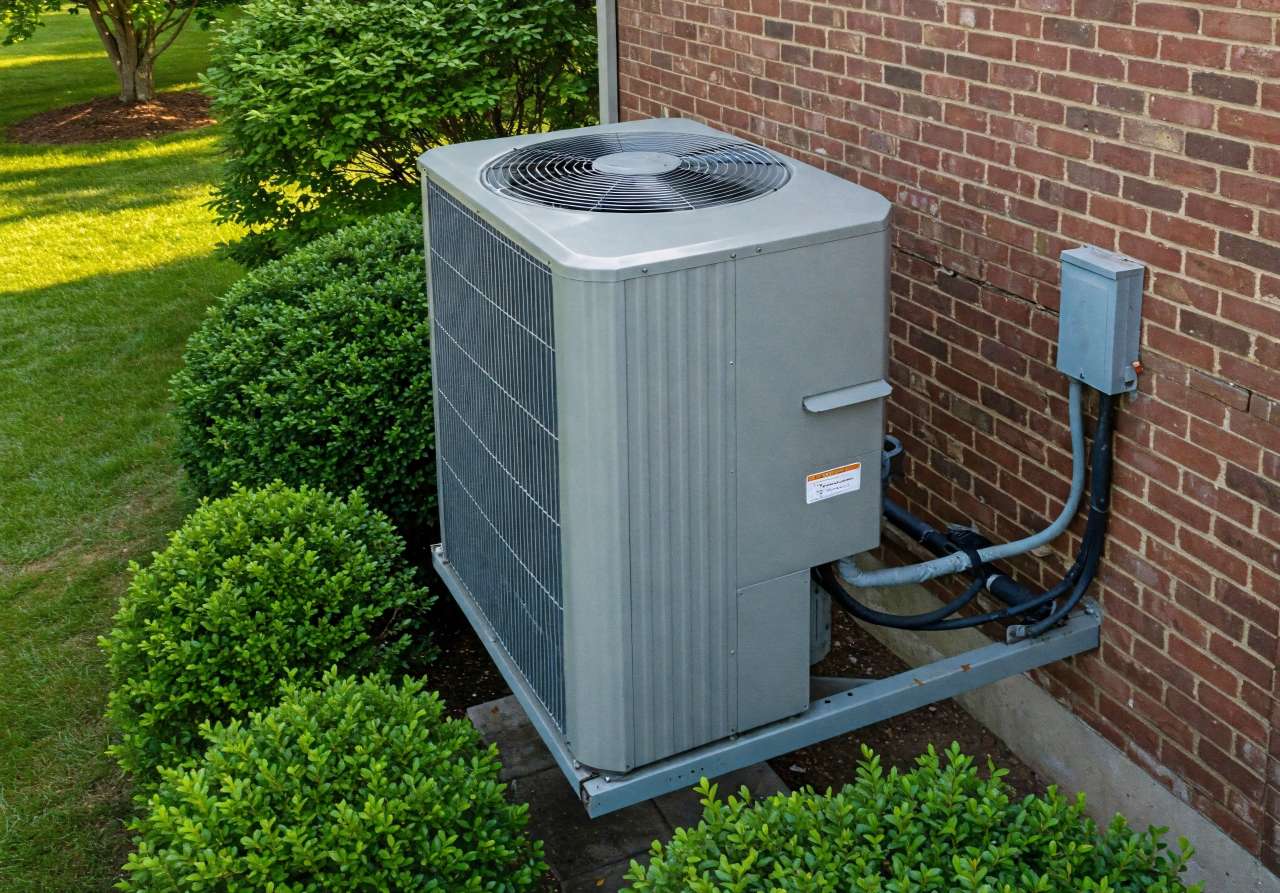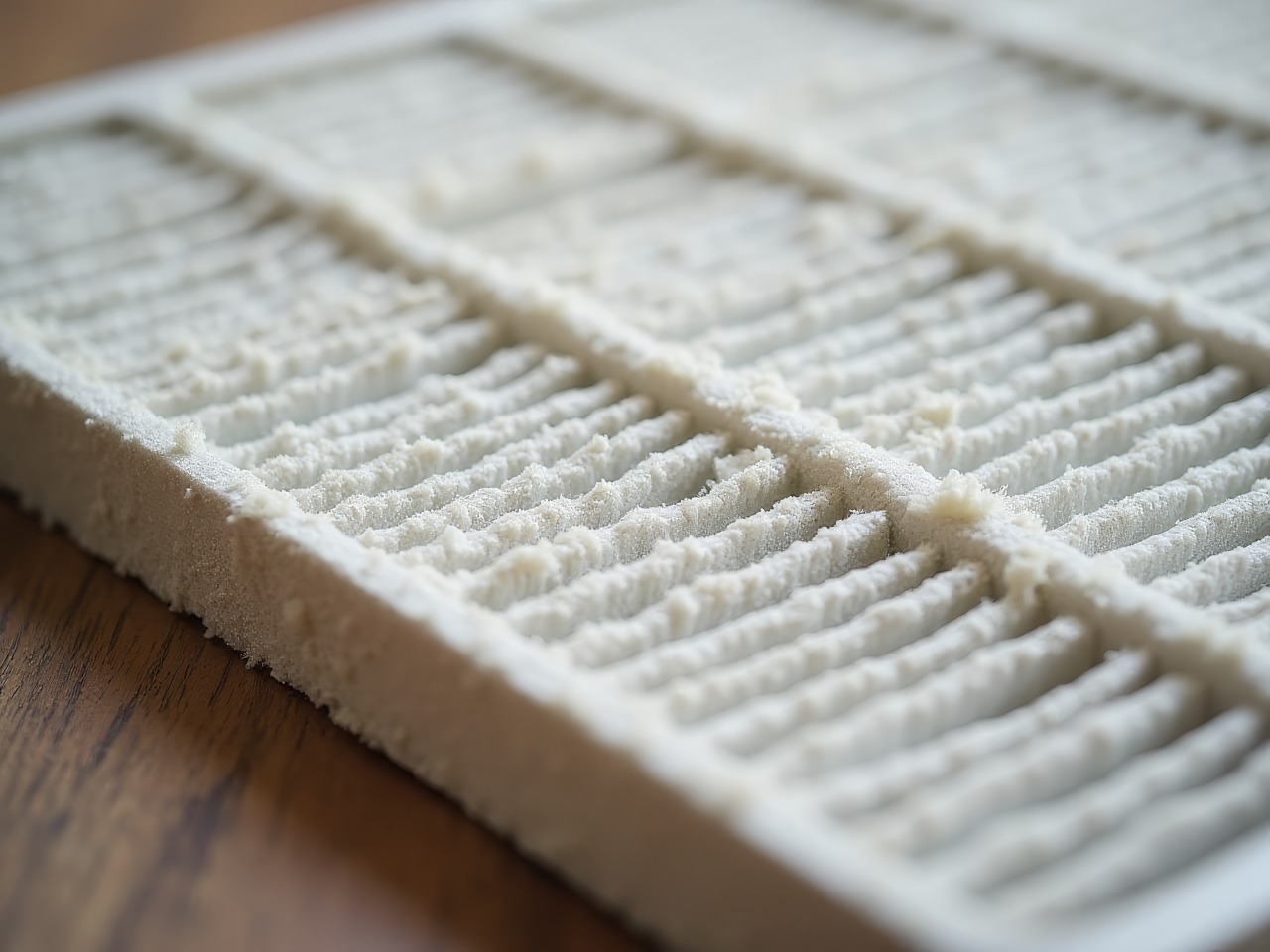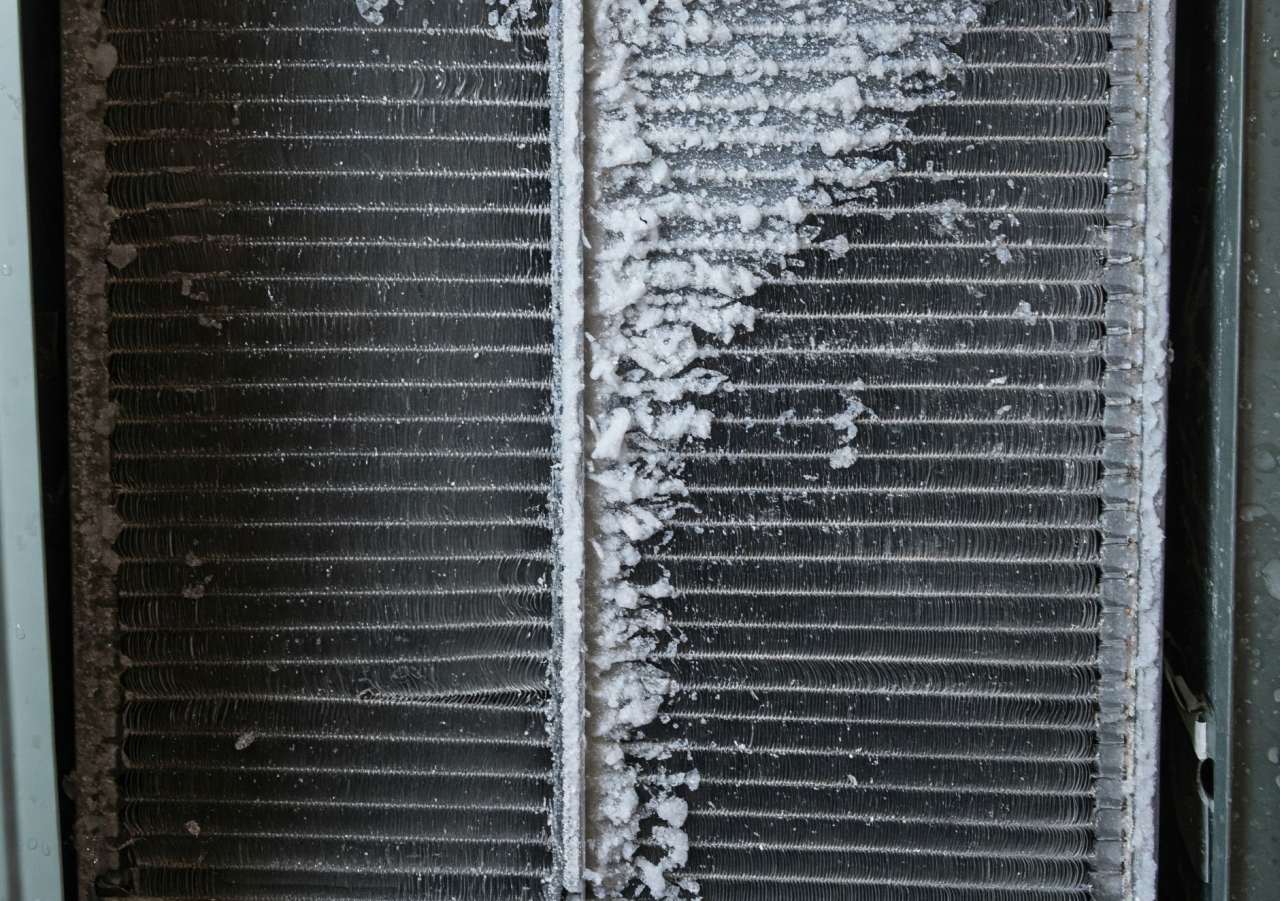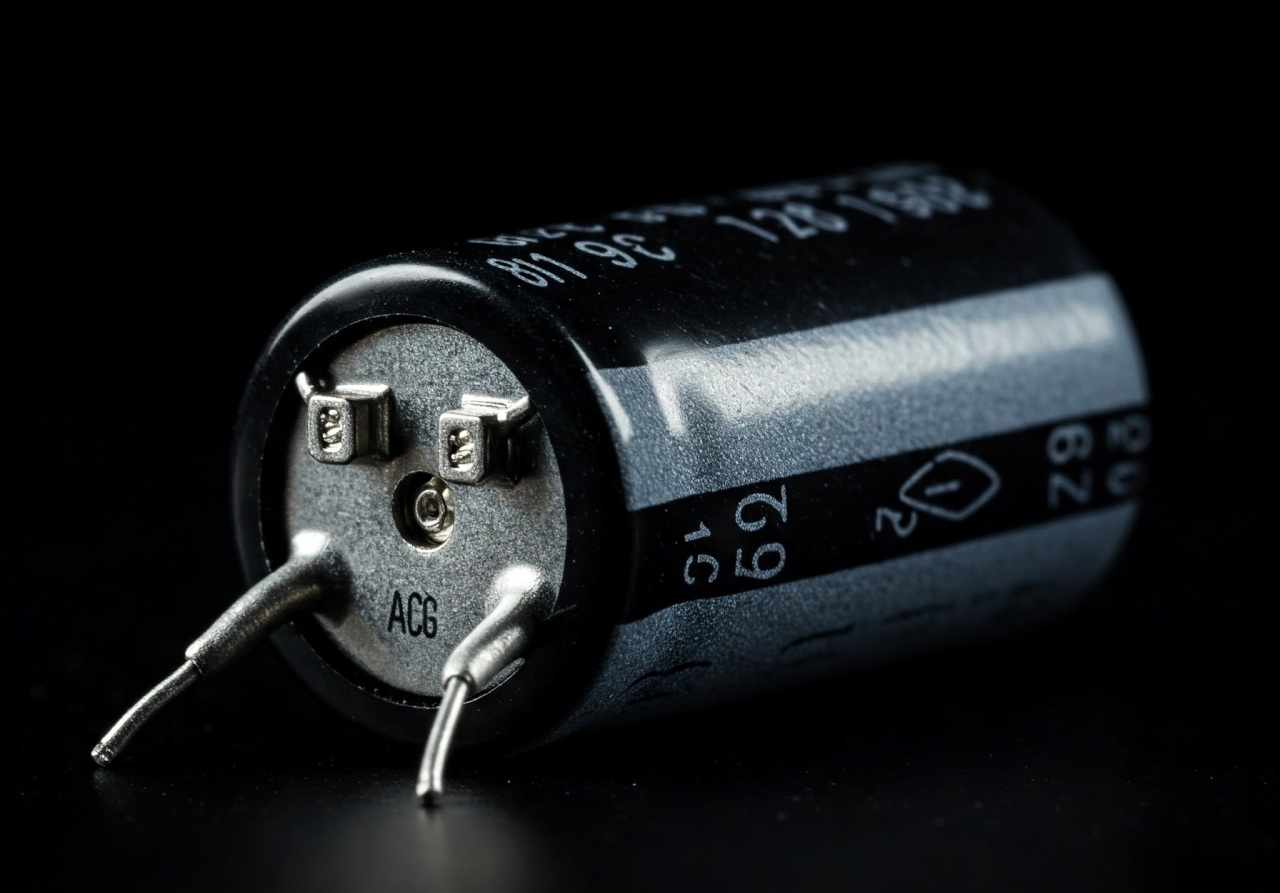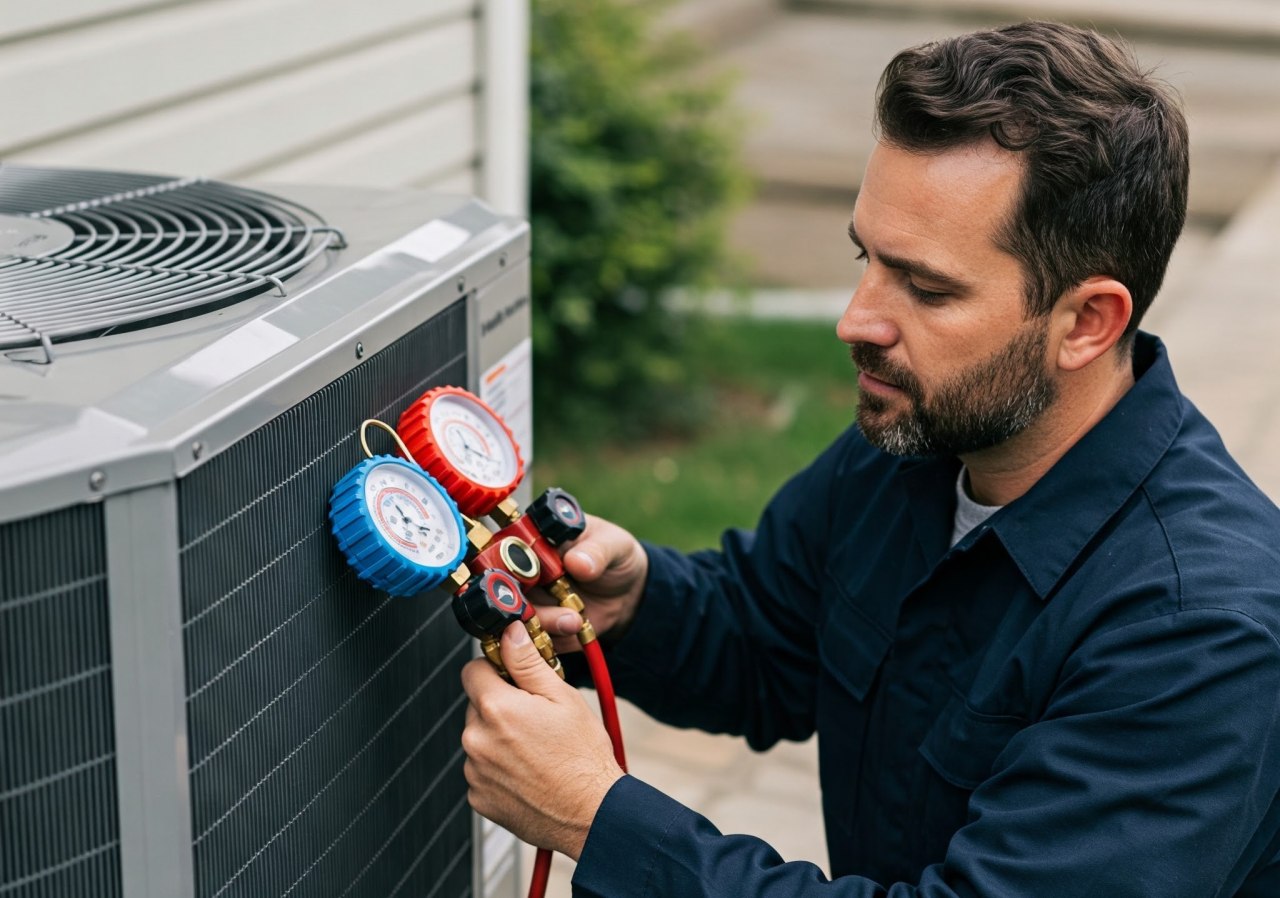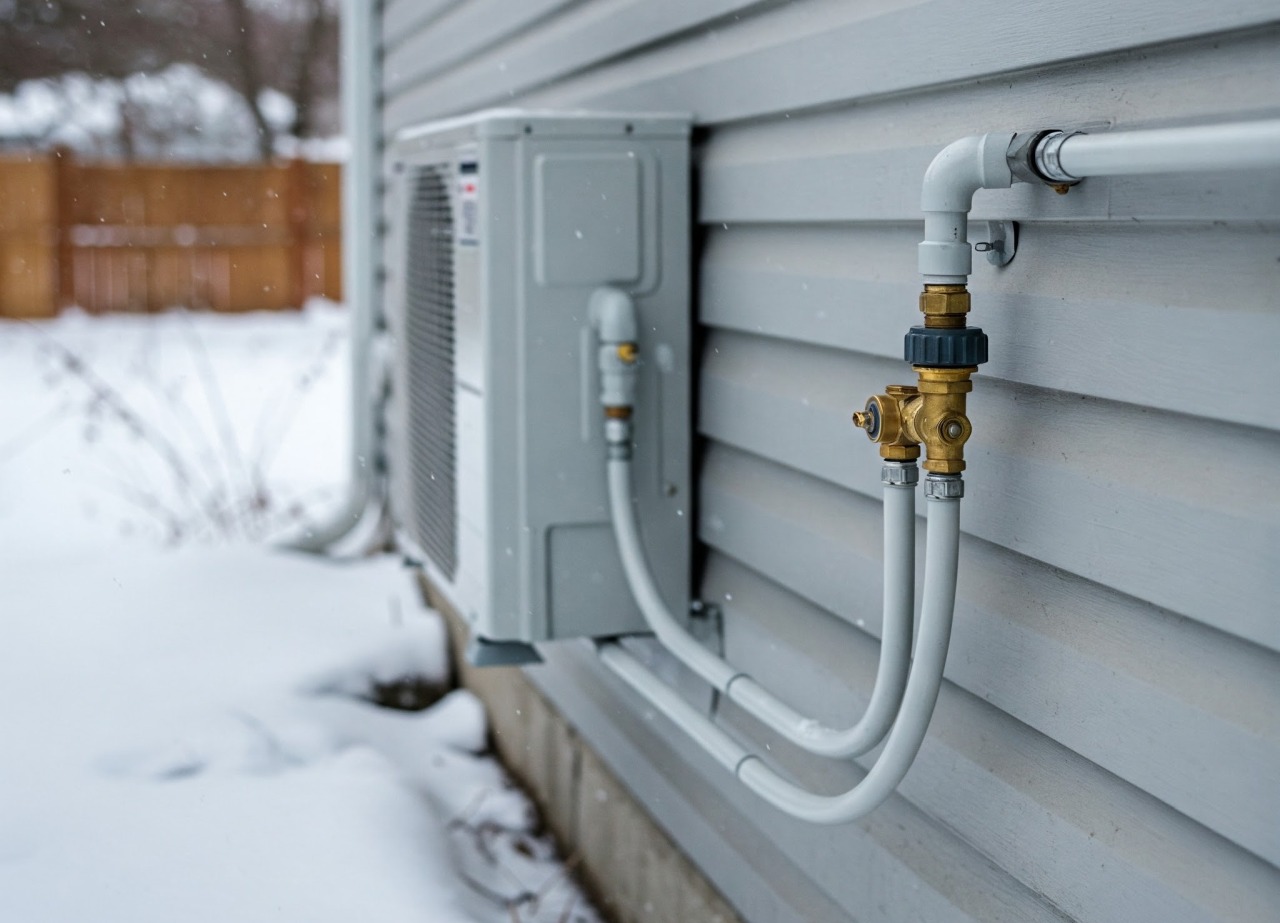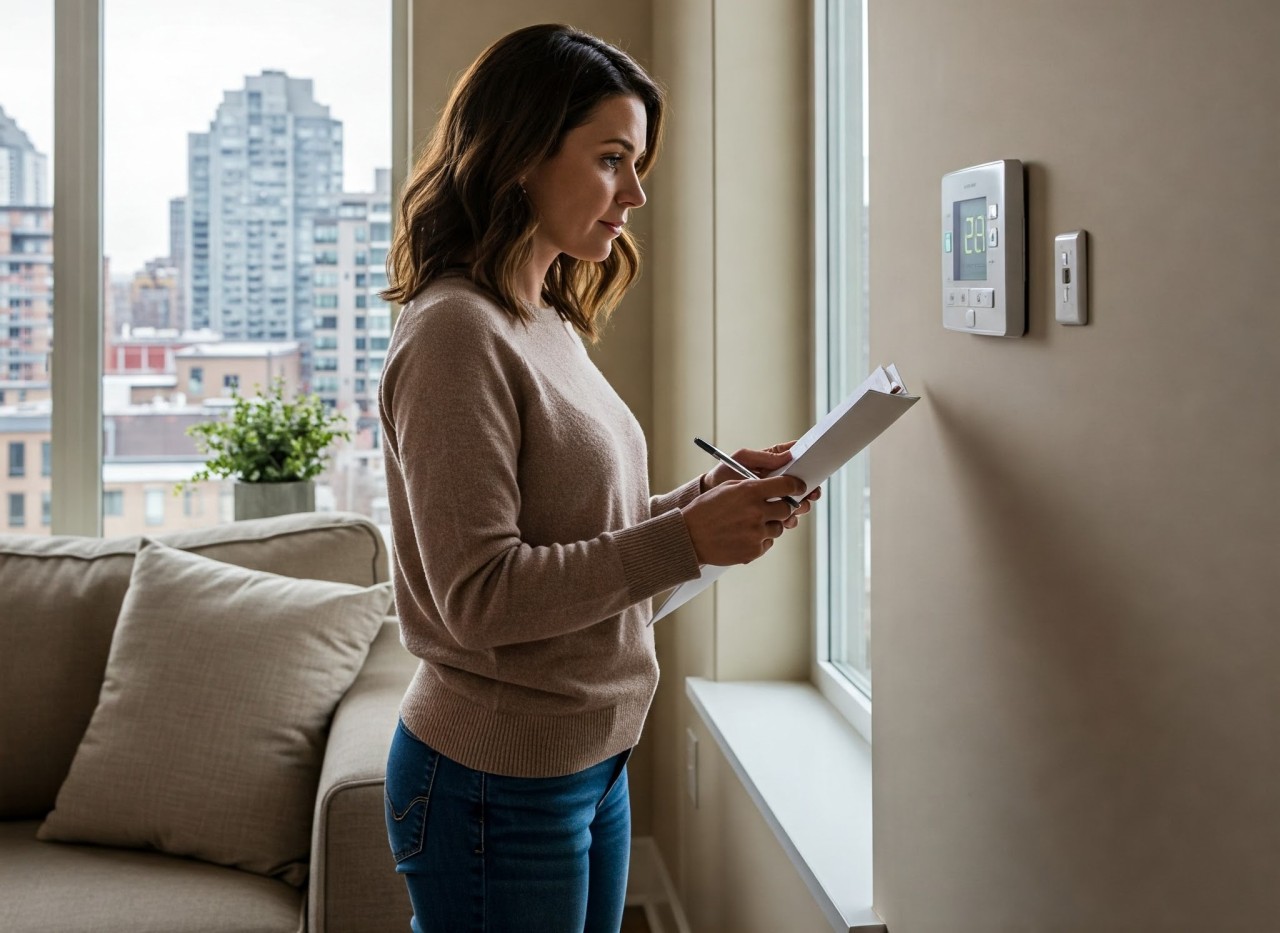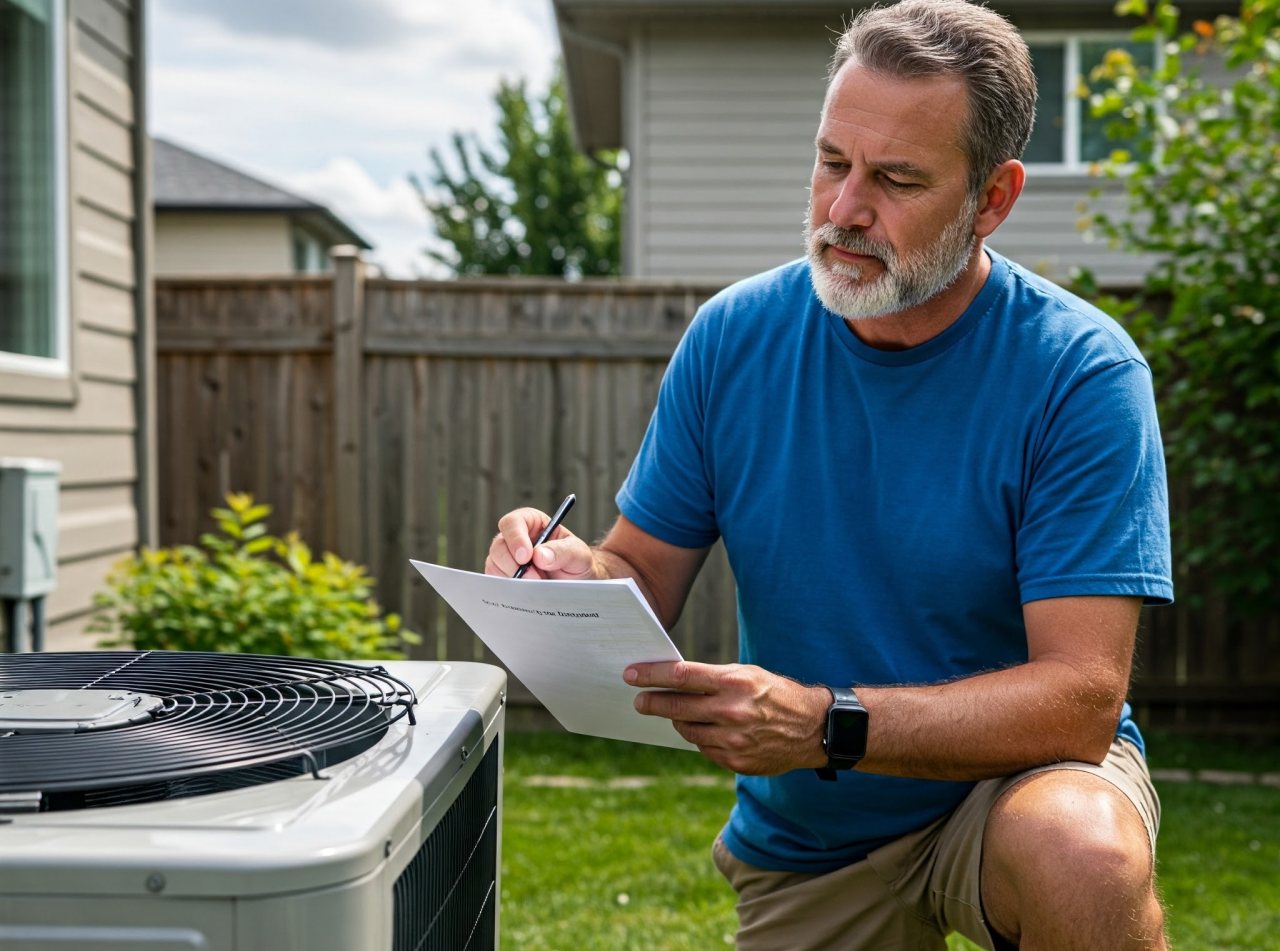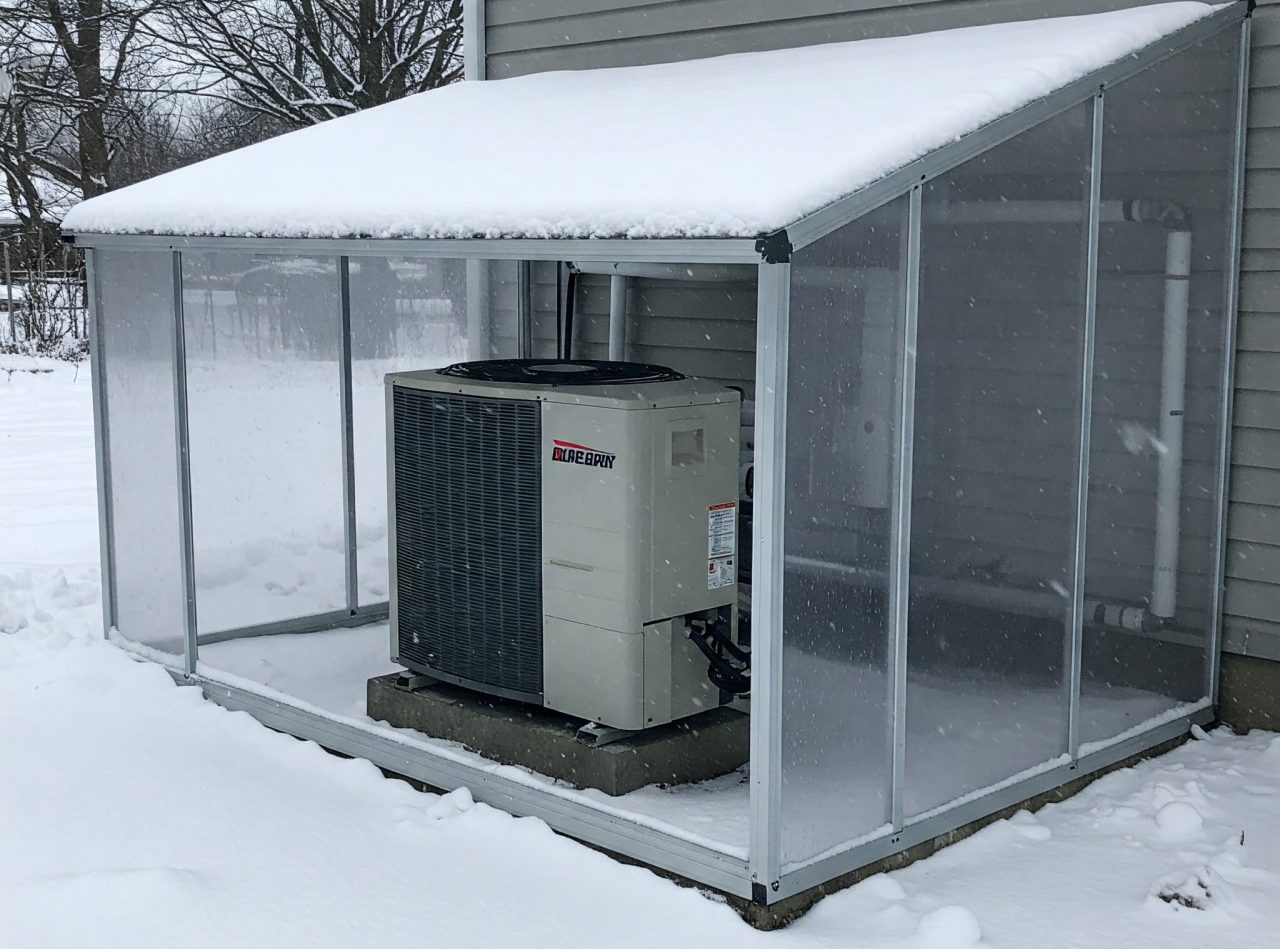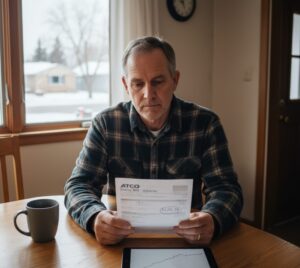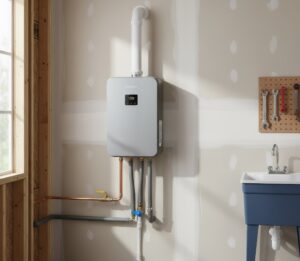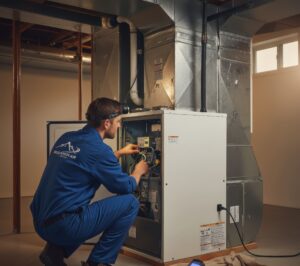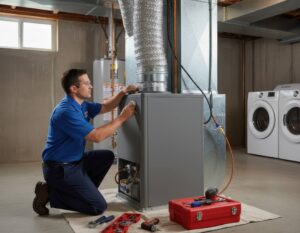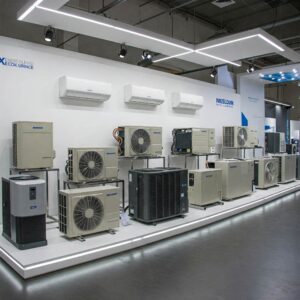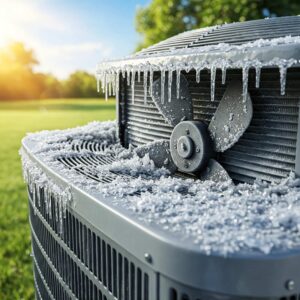Not everyone in Alberta has air conditioning but, trust me—once you install an HVAC system with central air conditioning for the summer months, it becomes hard to live without.
So, if your AC is not kicking on when it should, it’s time to investigate. Most times, there’s a relatively simple explanation for why your AC won’t start but, in the worst-case scenario, it can mean expensive AC repairs or replacement.
Here are the main reasons why your AC is not kicking on—and what you can do to troubleshoot and prevent future home cooling problems…
Air Conditioner Not Kicking On? Here’s Why…
If your air conditioning won’t start, it’s likely due to a thermostat issue, a power supply problem, a badly clogged air filter, a dirty or frozen evaporator coil, a faulty capacitor/contactor, refrigerant issues, a clogged condensate line or a compressor problem.
Most of the issues require professional troubleshooting and repairs but some are more serious than others…
MAKE THE RIGHT HEATING & COOLING DECISIONS…
For over two decades, Alberta Mountain Air has helped Calgarians solve heating and cooling problems and maintain ideal comfort levels. Get in touch online for a quote.
How Air Conditioners Work
To troubleshoot home cooling problems, it helps to understand a little about how air conditioning works to cool your home.
An air conditioner uses refrigerant to absorb heat (and moisture) from inside the home, releasing it outside, and circulating cool air to lower the temperature inside. This involves several simultaneous processes during the cooling cycle, such as compression, condensation, expansion, and evaporation facilitated by the essential components of the cooling system.
The three essential components are the compressor and the condenser (located outside the home) and the evaporator, located inside with the AC handler in central air conditioning.
The other essential “ingredients” in air conditioning are electricity and refrigerant gas. Anything that affects these key components that help to cool your home can cause your AC to stop kicking on.
The AC Cooling Process
- Warm indoor air is taken in by the return vent through the filter and blows over the evaporator coil.
- The heat is absorbed into the cold refrigerant, which converts from liquid to gas.
- Cool air is blown back inside to cool the space.
- As the refrigerant is transferred outside to the compressor inside the outdoor unit, it is pressurized to raise the temperature.
- Hot refrigerant reaches the condenser and its heat is expelled and absorbed by the outdoor air.
- The refrigerant instantly cools, which changes it from gas back to liquid form.
- The cooling process is repeated as required.
Besides a few basic maintenance steps and regular checks, most issues with the cooling process require a professional to fix—but it helps to know what those issues could be if your AC is not working.
Reasons Your Air Conditioner Won’t Turn On: Deep Dive
Let’s go through the main potential issues that will cause your AC to not kick on when it’s supposed to…
Thermostat Malfunction
The thermostat communicates the desired temperatures inside the home to the HVAC system. If the thermostat malfunctions, your AC does not know when to start and stop.
Thermostats may malfunction due to dead or low batteries (replace them) or faulty/loose wiring (this needs a professional fix) or may simply need replacing due to a faulty temperature sensor.
Alternatively, the problem could be human rather than mechanical. If you set the wrong temperatures but forget or accidentally change the settings, the air conditioner might obey the settings—but they might not be what you expect. The thermostat will need to be reset.
Check your thermostat settings regularly. Make sure the system is set to COOL and the fan to AUTO. Consider upgrading to a programmable or smart thermostat if you need a replacement.
Circuit Breaker Problems
Large appliances like central AC systems should have their own circuit breaker, as required by the National Electrical Code. This prevents overloading and ensures safe operation.
Overloaded circuit breakers from too many appliances or power surges after storms will trip and cut off the power to those appliances. If that happens, find the electric panel and reset the breaker to ON; wait 30 seconds and then turn on the air conditioner again.
If that doesn’t fix the problem or the breaker trips again, call an HVAC or electrical professional.
Other Power Supply Problems
Other power supply problems, such as unplugged equipment or loose or damaged wiring, are other reasons why air conditioning won’t kick on.
Some basic checks that everything is plugged in correctly can troubleshoot some AC problems. The outdoor condenser unit can come unplugged, for instance, or the indoor shut-off switch for the HVAC system (usually located near the furnace or air handler, in a closet, crawl space or attic) can be accidentally flipped.
There may also be an emergency shut-off switch next to the outside AC unit in a metal box on the side of your house. This allows the safe servicing of the condenser unit. If this switch has been turned to the OFF position, your AC will not kick on when started.
Another problem that can cause an AC unit to stop working is loose or damaged wiring, such as low-voltage or high-voltage wire. Repairs will need professional attention.
Clogged Air Filters
From our experience, the majority of AC problems stem from poor airflow caused by dirty HVAC filters and a lack of regular cleaning or replacement of these key components.
Clogged filters will obstruct airflow, weaken cooling performance, damage indoor air quality, and prevent an air conditioner from starting in more extreme cases.
The importance of the filter is evident from the U.S. Department of Energy statement that a clogged filter causes systems to use 15 percent more energy.
Ideally, HVAC filters should be cleaned or replaced every 4-8 weeks in summer to maintain good airflow and prevent many common AC issues—more regularly if you have pets, asthma sufferers or renovation projects in the home.
Dirty or Frozen Evaporator Coils
A dirty or frozen evaporator coil in the inside air conditioning unit is another common emergency AC problem that usually relates to clogged air filters and can cause the AC not to kick on.
Inspect your AC for ice buildup if you’re experiencing problems and trying to troubleshoot. The ice should be allowed to completely thaw and HVAC filters changed if clogged. Then turn the unit back on.
If the ice problem reappears on the coils, a professional will need to check what is causing it—possibly a refrigerant-related issue.
Faulty Capacitor or Contactor
A faulty capacitor or contactor can also prevent an AC unit from starting.
The capacitor is an electrical component that stores and releases energy to help start and run the AC’s motors. If your AC is clicking or the outdoor unit is humming but not turning on, the capacitor may be faulty and require professional repairs or replacement.
The contactor is an electrical switch that controls the power flow to the compressor and condenser fan, releasing power when the thermostat calls for cooling. If it malfunctions, the AC won’t kick on or will keep running continuously—or clicking/chattering sounds could be emitted.
Refrigerant Issues
According to studies, refrigerant leaks are responsible for approximately 17-19 percent of AC failures.
While most refrigerant issues will impact cooling performance or produce strange noises rather than preventing the system from starting, if your AC is not kicking on, it could be due to very low refrigerant levels.
In modern systems, when refrigerant is too low, the low-pressure switch may shut down the system to prevent compressor damage. The compressor could also overheat due to a lack of refrigerant—causing it to shut down for safety purposes.
Severe freezing of the evaporator coils may also restrict airflow so much that the AC system fails to start.
Refrigerant should only be handled by licensed professionals so don’t attempt to troubleshoot a refrigerant issue in your home AC.
Clogged Condensate Line
The inside AC unit is responsible for removing heat and humidity from the indoor air. The humidity eventually turns into condensation, which is channeled from the drain pan through a condensate line or drain line to outside the home.
If the pan is full or the line becomes blocked with dirt or debris, water will back up and this can cause water leaks and system shutdowns. Many AC systems have wet switches designed to shut off the AC when a water leak is detected or when the drain pan is full.
You may need a professional to safely unclog the condensate line and restore your system to good working condition.
Checklist for Troubleshooting an AC That Won’t Turn On
DIY AC repairs are not a good idea—but there are a few simple HVAC troubleshooting steps you can take before calling the professionals and fixing the AC unit.
Start with the following checklist:
- Inspect the HVAC power connections inside and outside the home, including the emergency shut-off switch, to make sure that everything is plugged in and connected.
- Check that the breaker switch is in the ON position.
- Check the thermostat has battery power and the correct settings.
- Make sure that the drain pan is not full and the condensate line is not blocked.
- Examine the air filter to make sure it is clean (and change it if not).
- Check the evaporator coil for icy buildup.
Preventative HVAC Maintenance Tips to Avoid AC Startup Issues
The best way to avoid AC startup issues is to book regular air conditioning services—at least once a year.
Ideally, have your AC maintained in the spring so that when you need it, the unit kicks on as it should. Alternatively, end-of-summer maintenance gets the unit ready for the next warm period after the winter.
Between air conditioning maintenance calls, homeowners should change the filters regularly while the system is in use (every 6-8 weeks), and go through the above checklist at least once a year—even if there are no issues with the AC kicking on.
Protecting your HVAC system with regular tune-ups like this should be a priority because the cost of AC and heating appliances in Alberta is a major household expense—and nobody wants to add unnecessarily to these costs with frequent repairs.
FAQs
Ductless mini-split air conditioners are a viable alternative to central air conditioning for homes without existing ductwork. Ductless systems cool individual rooms rather than the entire home but they can experience most of the same issues as central air conditioners. Any air conditioning system is better and more reliable with proper installation and regular maintenance.
Some AC systems have a RESET switch on the outside unit, which can help reactivate the AC system. If there is no RESET option, turn off the thermostat and the breaker or disconnect switch, wait 5-30 minutes, switch the power and the thermostat back on (set at a temperature a few degrees lower than the room), and see if the AC kicks on. Even if this works, it’s best to book an AC system tune-up to identify the underlying cause of the problem—or you could cause further damage to the system.
If your AC is not kicking on, it likely needs troubleshooting, maintenance, cleaning or repairs rather than replacement. However, here are 10 signs that it is time to replace your AC unit.
Because of the extreme winter conditions in Alberta, it’s a good idea to cover your air conditioner in winter—but if you use a full vinyl cover rather than constructing a roof for your outside unit, don’t forget to remove it before your AC kicks on in the spring or summer.
Get Your AC Ready for the Summer…
Our team performs regular AC tune-ups and repairs for families in Alberta, keeping them comfy in their homes all year round.
All HVAC professionals at Alberta Mountain Air are SAIT-certified and can help you make the right heating and cooling decisions. So, if you’re in Calgary and considering your heating and cooling options, contact us online.
